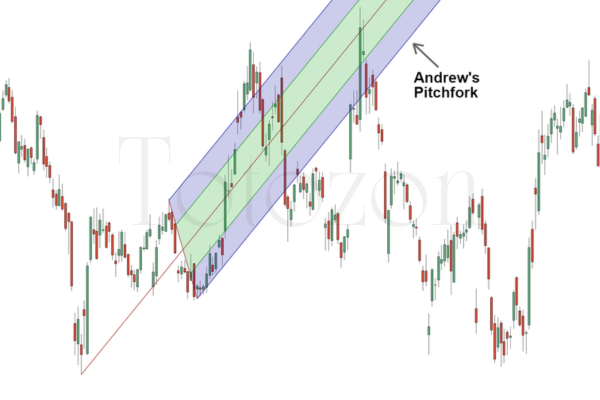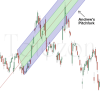-
×
 The Orderflow Masterclass with PrimeTrading
1 × $17.00
The Orderflow Masterclass with PrimeTrading
1 × $17.00
Andrews Pitchfork Basic
$6.00
File Size: Cooming soon!
Delivery Time: 1–12 hours
Media Type: Online Course
Mastering Market Trends with Andrews Pitchfork Basic
Introduction
Understanding the movement of the markets is crucial for any trader or investor. One tool that has stood the test of time in technical analysis is Andrews Pitchfork. This guide introduces the basic concepts of Andrews Pitchfork, providing you with a solid foundation to start utilizing this powerful tool.
What is Andrews Pitchfork?
Andrews Pitchfork is a technical indicator used to identify potential reversal or support and resistance levels based on market price trends. It was developed by Dr. Alan H. Andrews and is likened to a pitchfork in appearance, consisting of three parallel trendlines.
Origin of Andrews Pitchfork
- Creator: Dr. Alan H. Andrews
- Purpose: To provide a framework for market trends
Components of Andrews Pitchfork
Understanding the components is the first step to effectively using the tool.
Main Elements
- Handle: The central trendline that starts with a pivot point.
- Tines: Two equidistant lines running parallel to the handle.
Setting Up Andrews Pitchfork
Proper setup is crucial for effective application.
How to Draw Andrews Pitchfork
- Identify Three Points: Usually two peaks and one trough or vice versa.
- Connect the Points: This forms the handle and the tines.
Using Andrews Pitchfork in Trading
Incorporating Andrews Pitchfork into your trading strategy can enhance your market analysis.
Trading Strategies
- Trend Identification: Determine the market direction.
- Identify Breakouts: Watch for prices that break out of the pitchfork channels.
Benefits of Using Andrews Pitchfork
Andrews Pitchfork offers several benefits in market analysis.
Key Advantages
- Clarity in Market Movements: Visual representation of trends.
- Dynamic Support and Resistance Levels: These adjust with the market.
Combining Tools for Enhanced Analysis
While powerful on its own, combining Andrews Pitchfork with other tools can provide deeper insights.
Complementary Tools
- Moving Averages
- RSI (Relative Strength Index)
Common Mistakes to Avoid
Effective use requires awareness of potential pitfalls.
Pitfalls in Usage
- Misplacement of Pivot Points: Ensure accuracy in selecting initial points.
- Overreliance: Always use in conjunction with other analysis tools.
Case Studies
Real-world applications to demonstrate how Andrews Pitchfork can be used effectively.
Practical Examples
- Example 1: Trend reversal identification in a bear market.
- Example 2: Continuation patterns in a bull market.
Tips for Beginners
Getting started with Andrews Pitchfork doesn’t have to be daunting.
Beginner’s Guide
- Start with Major Trends: Easier to identify and less prone to noise.
- Practice Regularly: Use historical charts to hone your skills.
Advanced Techniques
For those looking to deepen their knowledge of Andrews Pitchfork.
Expert Tips
- Adjusting Pitchfork Settings: Customize for different market conditions.
- Integration with Elliot Wave Theory: For cyclical analysis.
Conclusion
Andrews Pitchfork is a timeless tool in technical analysis, providing traders and investors with a clear framework to understand market trends and make informed decisions. Whether you’re just starting out or looking to refine your trading techniques, mastering Andrews Pitchfork can be a valuable addition to your analytical toolbox.
Why Not Elevate Your Trading Techniques Today?
Explore the dynamic capabilities of Andrews Pitchfork and transform your trading strategy!
FAQs
- What is the best time frame for using Andrews Pitchfork?
- Andrews Pitchfork can be used in any time frame, but it is often most effective in longer time frames where major trends are more discernible.
- Can Andrews Pitchfork be used for all asset types?
- Yes, it is versatile enough to be applied to stocks, forex, commodities, and more.
- How accurate is Andrews Pitchfork in market prediction?
- Like all technical tools, it is not foolproof but provides a reliable framework for market prediction when used correctly.
- Do I need special software to use Andrews Pitchfork?
- Most charting software includes Andrews Pitchfork as a standard analytical tool.
- How can I learn more about Andrews Pitchfork?
- Consider taking a course in technical analysis or reading books specifically about this tool and its applications.
Be the first to review “Andrews Pitchfork Basic” Cancel reply
You must be logged in to post a review.
Related products
Forex Trading
Forex Trading
Forex Trading
The Complete Guide to Multiple Time Frame Analysis & Reading Price Action with Aiman Almansoori
Forex Trading
Forex Trading
Forex Trading
Forex Trading
Forex Trading





















Reviews
There are no reviews yet.